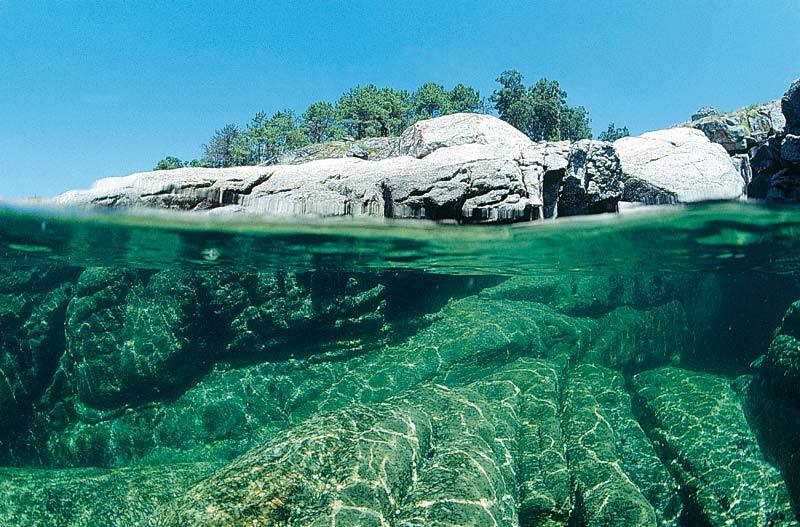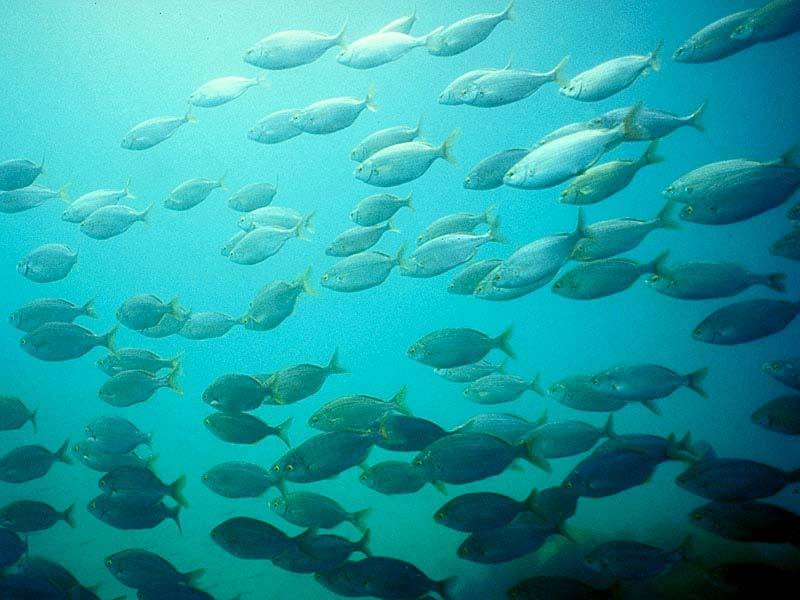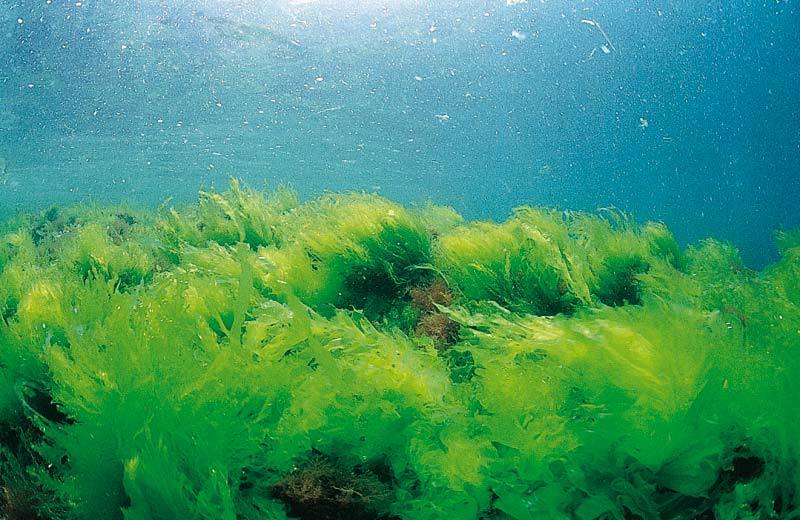Without going underwater, we can imagine the variety of sea beds, rocky to the west, defined by the energy and turbulence of the sea which erodes, destroys and deposits rocks. Constant movement of water, oxygen availability as well as orgaic mater and micro-habitats (caves and cracks), they are appropiate areas for animals and plants. Groups of brown algae (Saccohizas and Laminarias), an undergrowth which provides shelter and food for a great number of animals, fields of anemone, sepositus, sponges, gorgonians, octopus, “pintos” , breams, “julias”, conger eels, ”morenas” or small crabs.
The sandy seabeds are in sheltered zones, next to beaches, to the east of the islands, where the sea leaves less sediments. The animals living here acquire strategies due to the difficulty to find a shelter. We are speaking about beaches where fleas are, seaweeds stuck to loose rocks like cystoseira, bivalves like cockles, clams, razor clams and cephalopodos like sepia and crustacean like the Hermit crab and sea urchins. Flatfish hide under the sand (“solla”, turbot, ray).
Maerl sea beds on coastal areas with strong flows, with a substrate full of little pieces of red encrusting calcareous red algae which constitutes a shelter for a great animal diversity, clams, scallops, crabs and sea spiders.
Gravel bottom is formed by remains of shells like mussels, macaw,“peonza”, striped barnacle, or clams making a several centimitre layer. The animals living here are buried in these shell pieces: razor clams, cockles, octopus, flatfish, rays or soles.


